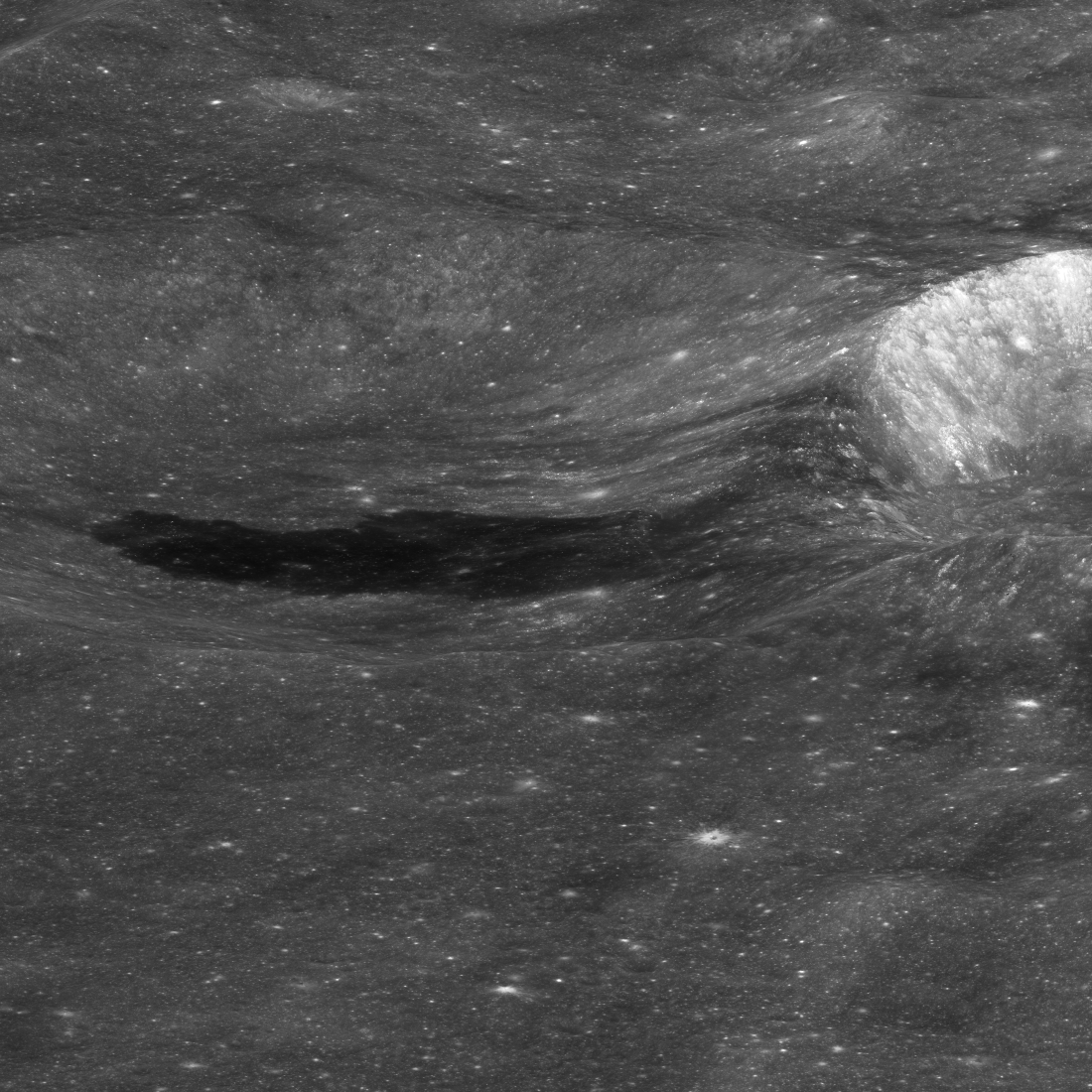
More than any other individual, Sergei Pavlovich Korolev (1907-1966) was responsible for early Soviet rocket and space successes. He was the mind behind Sputnik 1, the first artificial Earth satellite (4 October 1957), and Vostok 1, the first spacecraft to carry a human into Earth orbit (cosmonaut Yuri Gagarin, 12 April 1961). Korolev also inspired space exploration in the United States: had the Soviet Union not scored those early space firsts, President Dwight D. Eisenhower might not have created NASA and President John F. Kennedy might not have directed NASA to land a man on the Moon before the end of the 1960s decade.

The craters of the Moon are mostly named for scientists and engineers, with some celebrated explorers and male and female first names from many cultures thrown in for variety. An ancient, battered basin on the Moon's farside hemisphere honors Korolev. Within and near the 423-kilometer-wide basin lie smaller craters also named for Korolev but set apart by a following letter. Today's Featured Image is part of an oblique Lunar Reconnaissance Orbiter Camera (LROC) Narrow Angle Camera (NAC) image pair that takes in 27. 1-kilometer Korolev X (200.56°E, 0.56°N) and Korolev Z (200.48°E, 1.15°N). At 17.7 km wide, Korolev Z is only a little smaller than the city of Moscow.
Korolev Z partially overlaps Korolev X, so we know that Korolev Z is younger. Steep crater walls and fresh impact melt are also signs of Korolev Z's relative youth. Over time, impacts large and small will grind the melt deposits to dust and nearby impacts and moonquakes will make the steep walls slump.
The most remarkable geologic feature of Korolev X is a large impact melt flow that originated in Korolev Z. The asteroid or comet impact that excavated Korolev Z was violent: in less than a second it released enough energy to press down its floor, turn its rocks to lava, and collapse the kilometers-wide wall separating it from older, deeper Korolev X. When the floor of Korolev Z rebounded, molten rock surged over the collapsed wall into Korolev X, then flowed downhill for 14 kilometers before it cooled and solidified. The molten rock flood descended more than 1.5 kilometers as it coursed from north to south.
Grab your red and blue glasses to explore Korolev X and Z and the melt flow they share in the anaglyph 3D image strip below. Below that, be sure to zoom in on our large-size Featured Image - it is packed with small details.

Related Featured Images:
Hole on a Melt Sheet
Herigonius K Impact Melt Flow
Impact Melt Boundary
Introducing LROC NAC Anaglyphs!
Published by David Portree on 14 December 2018